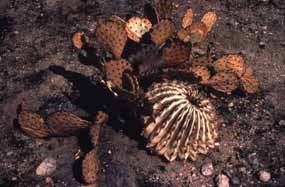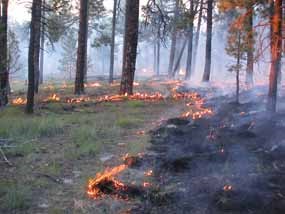
Role of Fire in the Desert Within the past three hundred years non-native weeds arrived with European immigrants. Some have invaded the desert, increasing the ground cover and the potential for the encroachment of fire into the desert. Native desert plants are poorly adapted to fire, and are easily harmed by it. Some of the most troublesome weeds in terms of increasing fire hazard include buffelgrass, red brome, and fountain grass. Buffelgrass Patch video - Spanish A Day in the Life of a Buffel Buster video - English 
Role of Fire in the Rincon Mountains At the upper elevations in the Rincon Mountains, fire has played a large role in shaping the plant and animal communities, and the ecosystem depends on fire to stay healthy. With increasing elevation, the desert grades into desert grassland, then oak woodland, pine-oak woodland, pine forest, and finally mixed conifer forest at the highest elevations. Research has found that fires historically occurred here every 5-15 years, depending on the plant community. Exclusion of fire can cause undesirable effects including the potential for unnatural accumulation of fuels, reduction in plant and wildlife diversity, impairment of ecosystem function, and the degradation of wilderness values. Timing of Fires Plants become increasingly dry from late winter to early summer because there is little rainfall. When the monsoon comes in July, lightning can be common and wildfires can result. Historically, frequent fires continually reduced plant biomass, decreasing the fuel load. Less fuel meant lower intensity fires. The fires mostly consumed pine needles, leaves, grass, downed logs, seedling trees, and shrubs, but large trees usually survived. In places, fires did get into the tree canopy, killing trees, but these new openings were rapidly colonized by new plant growth. The result was a shifting mosaic of vegetation which helped create diverse habitat for many species of wildlife. |
Last updated: January 9, 2017
